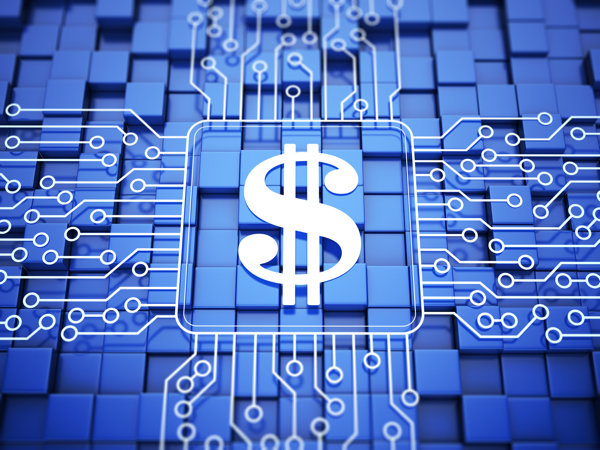
All eyes will be on this week’s US CPI report
Following a very solid, but softer than expected jobs report; the USD remains in an advantageous position but perhaps short-term speculators are a bit oversubscribed heading into the week.
The primary driver of late continues to be data surprise index between the rest of the world (soft) and the US (firm) which is sitting at all-time highs.
And while the NFP and AHE came in with slight misses, the US economy remains in the agreeable Goldilocks region, and as such, equity investors reacted favourably by taking the US indices higher outweighing the negatives from strained trade talks between the US and China.
On the trade war front, whatever optimism investors had about China-US trade negotiations should be undermined by the fact there was no communique, with rumours suggesting the two superpowers are sitting worlds apart after the US failed to win any concessions. Even the hint of trade war escalation is terrible news for global equities so there is the threat that any contrary Monday morning headline risks could dampen stock market sentiment right out of the gates.
Also, geopolitical developments remain top of the charts, with NAFTA trade negotiations starting up again; the US due to decide on Iran sanctions; and local elections for INR, and MYR.
On the G-10 Central Bank front, the BOE and RNBZ are due. Given the recent dreadful run of UK economic data and low BOE expectations, the RBNZ will be more interesting where the tail risk is for a more hawkish delivery.
On the Local EM FX front, BNM and BSP are due. BNM will likely keep interest rates on hold due to the softer than expected inflation readings in Malaysia while BSP could shift policy as Governor Espenilla’s latest comments do suggest he is laying the groundwork for a rate hike given the uptick in Philipines inflation readings.
However, all eyes will be on this week’s US CPI report, which will be this month’s most significant piece of economic data as it will go a long way to confirm the markets bullish read on the US economy and the Fed rate hike trajectory.
Oil Markets
The lack of any progress on the US Iran nuclear waiver is precisely what is pushing oil prices higher as West Texas Intermediate crude oil traded above the $70 mark for the first time since November 2014 on Friday as market offers ran thin.
We’re in the thick of it now as the president has until May 12 to decide whether the US will stay in a deal with Iran or not. While President Trump has walked back a number of his more hawkish policies, the market is buying into a hard line Iran response bolstered by the markets hawkish view of crucial Trump policy stalwarts, Pompano and Bolton.
With OIl prices surging, Baker Hughes reported that US Drillers added nine oil rigs in the week to May 4, bringing the total count to 834, the highest level since March 2015. But given the bullish price action on Friday, it’s unclear at this stage, give the Iran focus, if the markets will meander through its ritualistic Monday morning downside test on the back of rising oil drilling rig counts.
Gold Markets
After a midweek lull in geopolitical tension, the intense focus on Iran Nuclear deal perked up Gold geopolitical risk premium. It’s just not the US on this stage, but Israels and even Saudi Arabia have called the agreement flawed. And now with Iran’s President, Hassan Rouhani suggesting Tehran will scrap the deal and restart high-level uranium enrichment if the US pulls out. It appears we’re not far away from setting off the Middle East powder keg again. I guess the big question for politicians, is the world a safer place with a weak Iran deal or no deal at all.
The surging dollar continues to dampen Gold demand. But Gold prices bounced convincingly off the $1303 significant support level possibly supported by the threat of a Trump ” Put”. Indeed, the President can’t be happy with the strengthening dollar at precisely when US administration is trying to iron out trade policy with China. After all, no one wants an excessively strong currency in the midst of a trade war, so perhaps the Gold markets should be on guard for the President to remind us just how touchy the administration is the dollar rally.
Currency Market
The USD dollar has been on an impressive run since mid -April and while it’s difficult to pinpoint the exact reason, its safe to assume that waning global growth expectations on the back of weaker data out and Europe and Asia is one of the key drivers.
Almost overnight economies have gone from boom to downturn in Europe while Asia’s bastions of commerce like Korea and China are starting to show wear and tear at the seams. Korean exports(YoY) turned negative for the first time in 18 months, and suspicion continues to grow that the recent round of RRR cuts in China is signalling that deleveraging is ending. The recent shift in Pboc policy does hint that it’s possibly designed to address underlying weakness in the Chinese economy.
And while the correlation between relative interest rates is starting to pick up again, one does have to wonder how much more widening in the differential can be squeezed out unless the there is an actual adjustment in the Fed terminal rate.
And while the mystery of the global slowdown continues, however, unless the recent bout of USD strength is persuasive enough for Asia investors to buy U.S. debt without hedging currency exposure, traders might be best to take out a 1 or 2-month lease on the USD rally rather than buying into it en masse.
The U.S. Treasury Department will auction $163 billion in securities next week, comprising $73 billion in new debt and $90 billion in previously sold debt. Traders will be intently watching the bid to cover ratios on Tuesday auction of 31 billion in three-year notes, Wednesday $ 25 billion in 10-year notes and Thursdays 17 billion of 30-year notes.
The Euro
Traders are respecting the current price action on the EUR and reducing long EUR exposures as fundamentals are looking wobbly in Europe on the back data misses including the HICP inflation gauge. Given the market focus on data surprises and interest rate differentials, it certainly favours the EURO to move lower over the coming days as traders continue to anticipate further unwinding of this year’s most subscribed trade, long EURO. However . just how much more juice can be extracted from interest rate differentials unless the Feds adds another dot or two is the big question.
The Japanese Yen
Despite the rising political risk in Japan, USDJPY remains supported by easing of political threat in the Korean Peninsula along with higher US bond yields. The market is trading off USD dollar strength, not a weaker JPY. Based on that we should expect the USDJPY to continue to lag the DXY dollar rallies.
The Pound
The Pound after breaking below the 200-day moving average could be one of the most imperilled G-10 currencies on a stronger than expected CPI print this week. The Pound is utterly prone given the run of soggy economic data all but assures the BOE will sit pat at the May meeting.
Malaysian Ringgit
The Ringgit is struggling ahead of two key events, the BNM policy statement and the general election.
The GE14 week is finally upon us in what has turned out to be a much more hotly contested election run that what anyone had thought. Given this uncertainty, investors have been very tentative to re-engage the Ringgit due to the possibility of a large-scale knee-jerk negative repricing of Malaysian on the slight change the opposition could pull out a surprise. I sense investors are taking little for granted after the Brexit and Trump surprises.
BNM to stay on hold on 10 May amidst the preponderance of lower core inflation. Within this context, the trader will be looking for dovish signals for the MPC suggesting the BNM will stand pat for the remainder of 2018. With that in mind, Traders are also paring back MYR exposure for a possible dovish shift in BNM language.
Adding to the MYR woes is the surging greenback and higher US interest rates of late which not only weakens the MYR but has a negative implication for local debt markets as higher US rates make MGS bonds less attractive.

